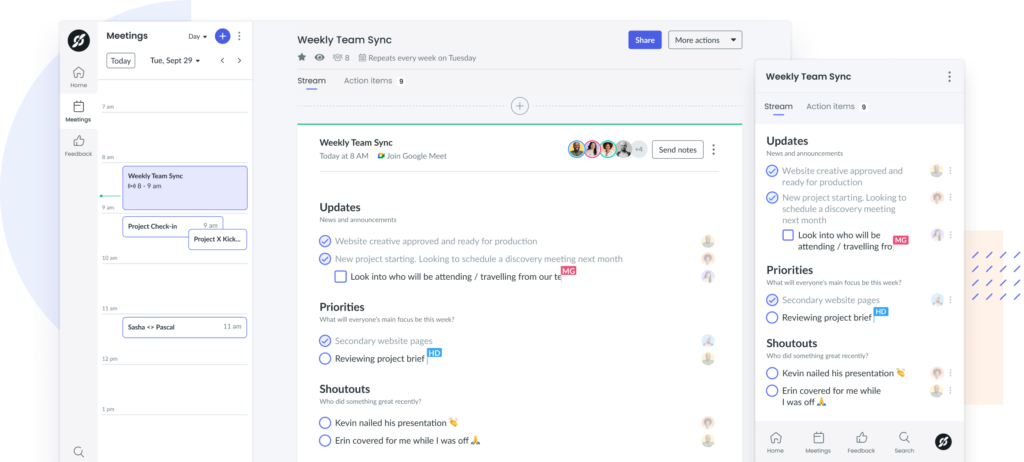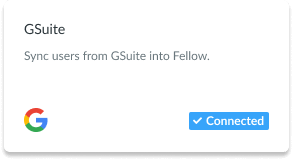Workplace Boundaries for Communication & Productivity
Learn how to establish healthy boundaries at work and let go of your people-pleasing tendencies today with these 6 tips and more!
Picture this: You start your Monday dreading the week ahead. Your day has barely begun but you have a never-ending to-do list. You already know it’s going to be a long day. Your boss has sent you several urgent action items with unrealistic deadlines that you’ll need to work through before you can even sip your morning coffee. Because you’ve been working extra hours to catch up, you haven’t been able to spend quality time with family and friends. Your mood is at an all-time low and your frustration levels are high. Something has to give!
As the saying goes, you can’t pour from an empty cup. Setting boundaries at work is necessary but it isn’t always easy.
Let’s explore the importance of workplace boundaries, learn about common boundaries employees set, and review six tips you can use to set effective boundaries moving forward.
What are workplace boundaries?
Workplace boundaries are the guidelines and rules that employees, managers, and departments establish to set clear lines between their personal and professional lives. Setting boundaries means establishing healthy professional practices for yourself to stay productive and avoid burnout. Some examples of workplace boundaries include employees limiting their response to work-related texts and emails after working hours or human resources departments implementing policies that protect employees from harassment.

Run efficient meetings, come to a decision, and get back to work
Level up your meeting habits to boost engagement and productivity with a collaborative meeting agenda. Try a tool like Fellow!

Importance of healthy workplace boundaries
1Improve communication and relationships
When you set healthy boundaries, you communicate your needs and expectations to your colleagues, which leads to better relationships. Boundaries create mutual respect between individuals and let everyone know what to expect. Healthy boundaries look different for everyone, so don’t be afraid to repeat yourself a few times during interactions with others. Telling your colleagues how they can respect your personal space and comfort levels will only strengthen your working relationships.
2Increase productivity and focus
Setting boundaries is a way to define what you will and won’t do at work and to manage the expectations that others have for us. Your productivity levels will increase when you aren’t worried that others might interrupt your workflow or ask that you break focus to solve their problems. Setting healthy boundaries with colleagues will allow you to prioritize deep work when it’s most convenient for you. Once your own needs are met, you can use your remaining focus to help others!
3Reduce stress and burnout
If you don’t set healthy boundaries, your work may leave you feeling helpless and resentful. A survey conducted by Deloitte found that 64% of respondents felt frequently stressed at work, while one in four professionals said they rarely take their allotted vacation days. Stress can make employees less productive, and ultimately lead to periods of extreme stress and burnout. Protect your physical and mental health by setting healthy boundaries with your colleagues and company.
Common workplace boundaries
1Physical boundaries
Setting physical boundaries means physically separating yourself from situations and relationships that make you uncomfortable at work. Think of physical boundaries as anything involving your body, health, or physical space. A few ways that you can maintain these boundaries are by not attending social events with colleagues after working hours, taking sick days and mental health days when needed, not working on weekends, and taking a set lunch break at the same time every day.
2Emotional boundaries
Emotional boundaries can feel more challenging to set than other types but are crucial nonetheless. These boundaries help you separate your own emotions from the emotions of your colleagues. For instance, someone with healthy emotional boundaries can demonstrate compassion and understanding for another person while not letting that’s person’s feelings ruin their day. You can establish emotional boundaries at work by communicating clearly to your colleagues and manager about how you want to give and receive feedback, not internalizing another person’s anger or bad mood, and staying away from workplace conflict that doesn’t involve you.
3Mental boundaries
Mental boundaries help protect your mental energy so you can use it on what matters. These boundaries are important because they help preserve your focus on important tasks and meetings. While it can be easy to get wrapped up trying to solve a colleague’s problem or completing a task you could have delegated, these things waste your precious focus. To protect mental boundaries, employees can commit to only working during set hours, prioritize deliverables instead of reactive tasks, mute distracting notifications during times they want to focus deeply, and decline unnecessary meeting invitations.
6 tips for setting workplace boundaries
1Maintain open communication
Healthy boundaries begin with open communication. Each time you work with a new person, take on a new project, or begin a new role, communicate your expectations with others. Use Fellow’s collaborative meeting agendas to jot down your ideas and concerns related to boundaries so there’s time allotted to discussing the topic during one-on-ones and team meetings. Individuals and teams can also use Fellow to take meeting notes so everyone has a record of the discussion for future reference.

2Delegate tasks
One of the most effective tactics for setting boundaries is delegation. Instead of biting off more than you can chew, aim to delegate tasks to capable employees when you can. Delegation will help you focus on high-priority tasks while empowering others to learn new skills as well.
Fellow makes it easy to host coaching sessions and give meaningful feedback. Using our platform, you can share real-time feedback on meetings, projects, and performance.

3Reach out for help
Setting boundaries can be tough, especially when you’re not used to it. Lean on others for support as you get started. For instance, if you’ve become the go-to person when other departments in your company need help but realize you no longer have the bandwidth to take on this extra work, develop a plan with your manager on how you can set boundaries. Don’t be afraid to notify your supervisor or subordinates when you need to adjust deadlines or alter a project’s timeline so that it aligns with your schedule.
4Be professional
When you have a conversation with others regarding boundaries, do so politely. Setting boundaries isn’t an excuse to be rude to your colleagues and most people will be unaware of your priorities at any given time. For example, if your teammate asks if you can help them work through the details of a project, don’t act like they should know you have a lot on your plate. Instead, say something like: “Thank you for reaching out. I’m busy working on project X and can’t take this on at the moment but am available to can meet about this next week if that works for you.” Remember, your colleagues aren’t mindreaders!
5Leave work at the office
It can be tempting to send one more email when you get home from work, but this sets a precedent that you’re willing to work after hours and can lead to an unhealthy work-life balance. At the end of the day, mute your work notifications and notify colleagues of how they can reach you in the case of a true work emergency. If you work from home, try working in a separate space from your main living areas or storing all work devices out of sight at the end of the day.
6Use technology to your advantage
Leverage applications you currently use to set boundaries and create structure in your workday. For example, if you find you’re most productive in the morning and want to use that time for focused work, try setting your Slack or Microsoft Teams status to Do Not Disturb for the first two hours of each day and block out time in your calendar for focused work so your teammates know not to bother you.
Use Fellow to set boundaries during one-on-ones and team meetings. Our tool makes it easy for teams to have important conversations. Fellow also integrates with a wide range of other tools like Microsoft Teams, Zoom, and Google Workspace, so you don’t have to leave your favorite applications to build a culture that respects everyone’s workflow.

Parting advice
Imagine this: You start your Monday feeling refreshed because you’ve had adequate downtime to unwind over the weekend. You know exactly what you have to do today and you’re excited to tackle your to-do list. Last Friday, you delegated a few tasks to your employees and made a plan with your manager to ensure nothing will fall through the cracks. You know that maintaining a healthy work-life balance moving forward will help you be a better, more productive teammate!
Your work life, communication skills, and overall effectiveness are bound to improve when you maintain effective workplace boundaries. Get started setting boundaries today by following our six tips!











